More reading here. Espadrills to standby.
7 October 2011
Cars & Music - Miami Vice
A slightly tenuous link; the Ferrari 365 GTB4 convertible and Testarossa were in Miami Vice, whose theme tune and incidental music were composed by Jan Hammer. And there were two soundtrack albums of pretty spiffy music by other artists. OK, maybe not that tenuous.
During the first two series and for two episodes from the third, Detective Sonny Crockett drove a midnight black 1972 Ferrari Daytona Spyder 365 GTS/4 replica with a Florida license plate ZAQ178. Ferrari North America had turned down the request by Michael Mann (MW's creator) and the Miami Vice production team for authentic Ferraris. Ferrari North America did the same with Magnum P.I., forcing that production to purchase actual 308 GTSs. Although Tom McBurnie is credited with planting the Daytona Spyder in the mind of the public, it was actually Al Mardekian, an importer of grey market exotica, who sold Miami Vice production crew the two look-alike Ferraris for $49,000 each.
McBurnie was hired to build the bodies for the Corvette-chassised cars. The Ferrari used in the first two series were rebodied Corvettes, based on '76 and '81 (car 1 & 4 of the production run respectively) Corvette C3 chassis that had been modified with replicas of the Pininfarina - designed bodywork; these being built ubder the name of specialty car manufacturer Markidian. In total, two Corvette Daytona replicas were used for the show, car 4 and then car 1 after the pilot, which acted as the stunt car.
The first appearance of the Daytona in the pilot episode is actually a real Ferrari; it only gets about ten seconds of screen time. The car is stationary, and Sonny is sitting in the driver’s seat, reading a newspaper. It can be clearly identified as a real Daytona (American version) by the door handles, side marker lights, windscreen rake and side windows. Before everyone jams the switchboard at Amazo Towers, the McBurnie car is the one used in the scene below. If you've seen it a thousand times before, you now how good it is; if you've never seen it - Goddam, I envy you.
Later on in the series, it was blown to pieces with a hand-held Stinger missile launcher during an illegal arms deal. By Jeff Fahey, no less. Lost for words? I was when I first saw this scene:
The cover to the second soundtrack replete with Testarossa. Why was the Daytona replaced with the ravishing Red Head?
Well, Enzo Ferrari filed a lawsuit asking McBurnie and four other companies to stop producing and selling Ferrari replicas. Miami Vice producers, on the other hand, wanted no legal troubles, and accepted Ferrari's offer of two free 1986 Testarossas on the condition that the replicas be destroyed. Carl Roberts had offered to build two new Daytonas for the 1987 series (the third series of Vice); when he learned that the Daytona was out, he proposed a solution. He would build Vice a Testarossa stunt car in return for the doomed Daytona. Carl's original plan was to remove the Daytona skin from the Corvette and replace it with Testarossa body panels, but this resulted in poor results and lead to Roberts to devise another plan. Roberts searched and found a 1972 De Tomaso Pantera, which was perfectly suited for the Testarossa body panels.
The Pantera was rigidly modified to withstand the duties of filming; it was raised 1.5 inches for additional ground clearance, while 2.5 inch square tubing was used to prevent potential roof buckling and added a reinforcing railing that doubles as a skid plate in case the car overturned. An auxiliary braking system designed to assist drivers in controlled spins and slides. An additional brake master cylinder was positioned in the brake line to enable it to feed the rear wheels independent of the front pair, enabling the driver to lock the rear end on command. Both master cylinders share one reservoir and are installed in series with the outlet of the original master cylinder port leading to the rear wheels. When the standard brake is applied, fluid passes freely through the 'stunt' master cylinder inlet and compensating ports and out the exhaust port to the rear wheels. When the stunt brake is applied, the piston in the master cylinder blocks off the compensating port to the exhaust port and pressurizes the rear brake system, cutting off the original brake master cylinder besides the compensating port in the stunt brake.
BF Goodrich TA's were added for enhanced grip, as were Tilton brake calipers for extra stopping power over the De Tomaso originals. The improved traction ironically required extra means to break grip when needed on film. This was acheived by installation of a hydraulic in-line brake servo lifted from a Volvo P-1800. It operated on engine vacuum to aid in breaking loose the pavement-hugging TA's, so assisting the master cylinder. I know it sounds like I'm teaching people how to suck eggs explaining how a braking system works, but I think you can agree this ain't your normal system. To further enhance the performance of the vehicle, Robert's team installed a port-injected nitrous system, which was later replaced with a plate-type setup. They also replaced the carburettor, replacing the standard Holley with a Predator item, which reduced fuel lag. A Modine all aluminium four-core radiator was used to guard against Miami's hot weather, along with liquid fed Auto-Meter gauges to monitor the temperature.
The 'Panterossa' was introduced in the second episode of the third season. Crockett complained to Lt. Castillo about driving vehicles that did not fit his Cover as a high roller drug dealer; that he was going around "looking like Li'l Abner", to which Castillo told him "It's out back." Sonny was delighted to find his new white 1986 Ferrari Testarossa, Florida license plate AIF00M. The original Testarossas donated by Ferrari North America were black metallic but were then painted white. The Testarossa briefly appears in black in the season 3 episode El Viejo, which was originally intended to be the season opener, but was then switched with When Irish Eyes Are Crying because it was thought that the season needed to start with a "bang", i.e. the fake Daytona being blown up. Different reasons were given at the time as to why the cars were repainted in white, ranging from a driving mishap by Don Johnson on the set that resulted in one of the cars requiring a new coat of paint, to Michael Mann thinking that unlike the Daytona, the black exterior paint did not make the Testarossa look good enough in night scenes.
Subscribe to:
Post Comments (Atom)

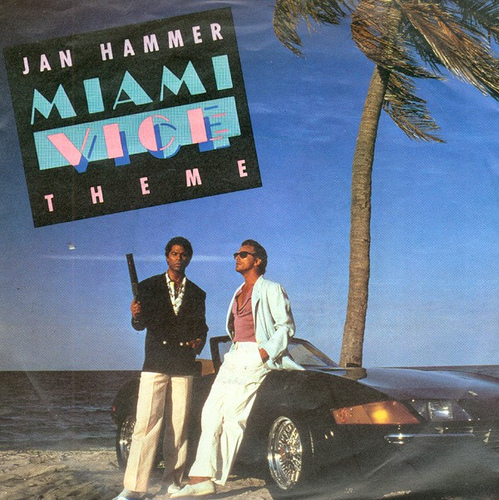
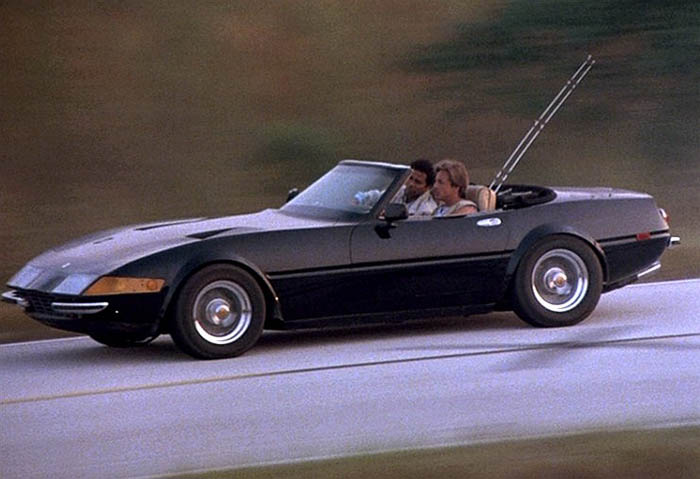
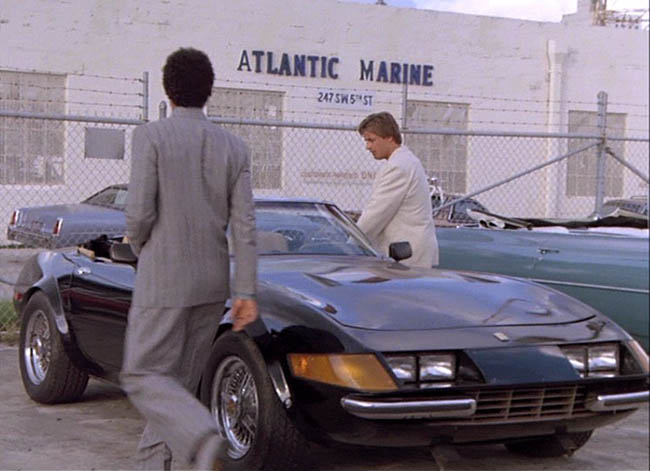
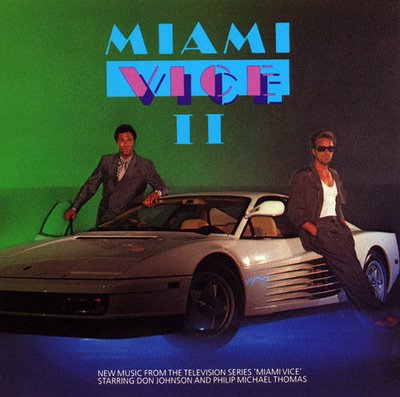
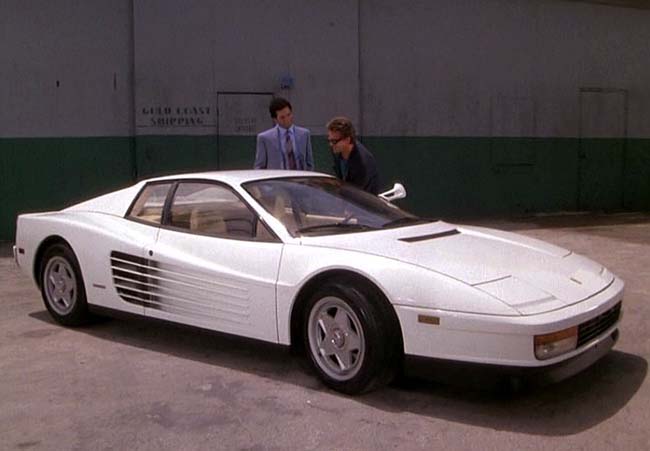

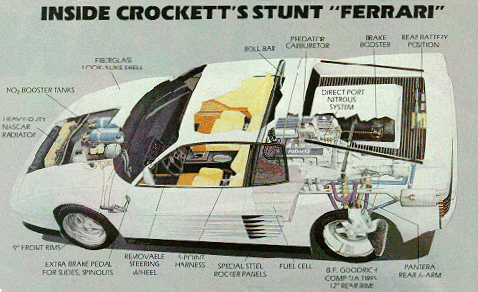

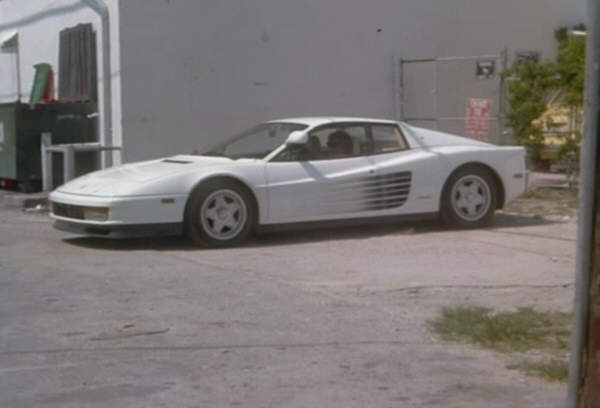
No comments:
Post a Comment